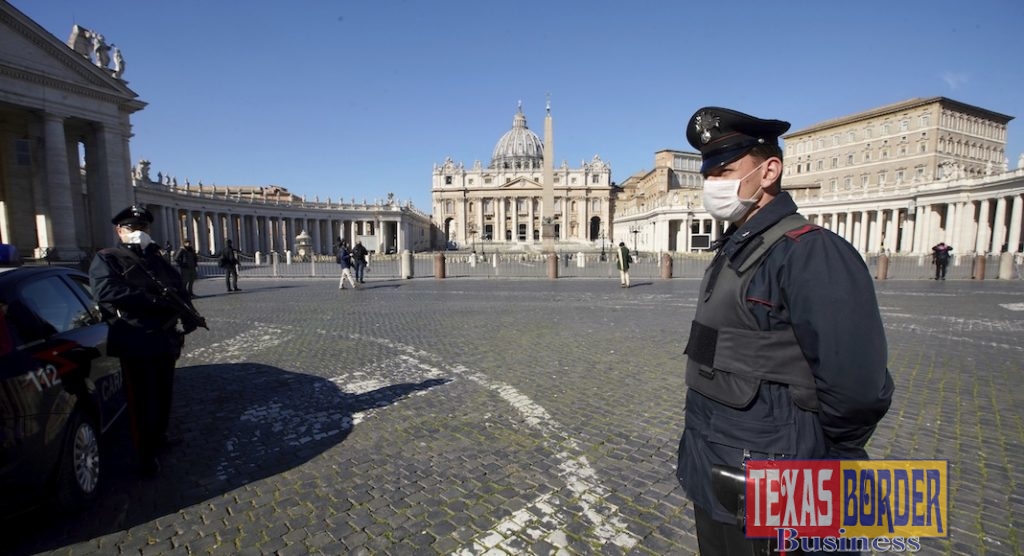Weather and its potential impact on how COVID-19 behaves has remained a consistent focus since the outbreak erupted.

Texas Border Business
AccuWeather Global Weather Center – The new coronavirus, and COVID-19, the disease it causes, took less than three months to travel around the world. After surfacing in late 2019, the virus has spread to more than 100 countries and, on March 15, 2020, the global death toll climbed above 6,000, just a few days after President Donald Trump declared a national emergency in the United States.
On March 11, the World Health Organization officially declared the coronavirus outbreak a global pandemic. This is the first pandemic in 11 years, according to the CDC.
The number of cases of COVID-19 outside of China exploded 13-fold over a two-week period covering late February into early March, WHO Director-General Tedros Adhanom Ghebreyesus said. “Thousands more are fighting for their lives in hospitals. We are deeply concerned both by the alarming levels of spread and severity, and by the alarming levels of inaction.”
Tedros said that of those infected, most will recover. Over 120,000 cases have been reported worldwide as of Wednesday, March 11, and more than 66,000 patients have recovered, according to data from Johns Hopkins University.
After weeks of spreading through the United States, the number of confirmed COVID-19 cases surpassed 1,700 cases and at least 40 deaths were blamed on the virus.
Weather and its potential impact on how COVID-19 behaves have remained a consistent focus since the outbreak erupted and experts are divided over what impact, if any, warmer weather will have on the spread of the outbreak.
Marc Lipsitch, professor of epidemiology at Harvard’s T.H. Chan School of Public Health, has said that warm weather will “probably not” slow down the spread, at least not significantly.
And Michael Osterholm, the director of Infectious Disease Research and Policy (CIDRAP) echoed that sentiment and cautioned that the world is only in the beginning stages of the outbreak. “This is a coronavirus winter,” he cautioned, saying he expects the outbreak to go on for six months or more. Both Lipsitch’s and Osterholm’s positions came in March and stand in opposition to some previous analysis.
In early February, Hong Kong University pathology professor John Nicholls said that he suspected three factors would potentially kill the virus within six months, according to a leaked transcript of a private conference call in early February.
“Three things the virus does not like: 1. Sunlight, 2. Temperature and 3. Humidity,” Nicholls said in remarks that emerged on social media. “The virus can remain intact at 4 degrees Celsius (39 degrees Fahrenheit) or 10 degrees C (50 F). But at 30 degrees C (86 degrees F), then you get inactivation.”
The CDC has cautioned that not enough is known about the virus to say for sure that weather will affect the spread, but a spokesperson said, “I’m happy to hope that it [the threat] goes down as the weather warms up.”
As experts work toward a better understanding, the world shudders in fear of the unknown, a worry that has rocked global financial markets, leading to daily volatility in the U.S. stock markets.
Here are the latest updates, listed in eastern time, and the most important things you need to know about coronavirus.
March 16, 10:36 a.m.
Olga Kurylenko, the leading actress who starred in the 2008 James Bond film Quantum of Solace as Camille Montes, announced in an Instagram post that she tested positive for COVID-19 on Sunday. She told her followers that she has dealt with fever and fatigue as her main symptoms in the past week.
Kurylenko joins other Hollywood stars such as actor Tom Hanks and his wife Rita Wilson, an actress and singer herself. Hanks and Wilson were diagnosed and have since been quarantined in Australia.
March 16, 10:04 a.m.
New cases of COVID-19 have fallen dramatically in mainland China. Chinese health officials said only 16 new cases of the illness were discovered on Sunday, and on Saturday only 20 new cases were reported, according to Channel News Asia. And of the 16 new cases, 12 were infections that came from people who had been traveling. Just four were a result of community spread, and those all occurred in Wuhan, the epicenter of China’s outbreak. The reduction in cases comes after the WHO on Friday declared Europe the new center of the outbreak. The weather in Wuhan has been warmer in recent days, with high temperatures reaching the mid- to upper-60s, above average for this time of year.
The AccuWeather forecast calls for the warm and sunny trend in Wuhan to continue this week, with highs reaching the mid-70s. Some infectious disease experts have said both warmer temperatures and increased sunlight could help slow the spread of SARS-CoV-2, the virus that causes COVID-19. The amount of sunlight is increasing every day in the Northern Hemisphere with the vernal equinox set to arrive this Thursday.
March 16, 7:14 a.m.
The National Security Council (NSC) is urging United States citizens to fight against misinformation. In a Monday morning tweet, the NSC said rumors of a nationwide quarantine or lockdown are “fake” and added that the Centers for Disease Control & Prevention (CDC) will be the only source to post the latest guidelines.
March 16, 6:37 a.m.
Here’s a look at the latest figures from around the world according to stats kept by Johns Hopkins University:
- Total confirmed cases: 169,387
- Total deaths: 6,513
- Total recovered: 77,257












